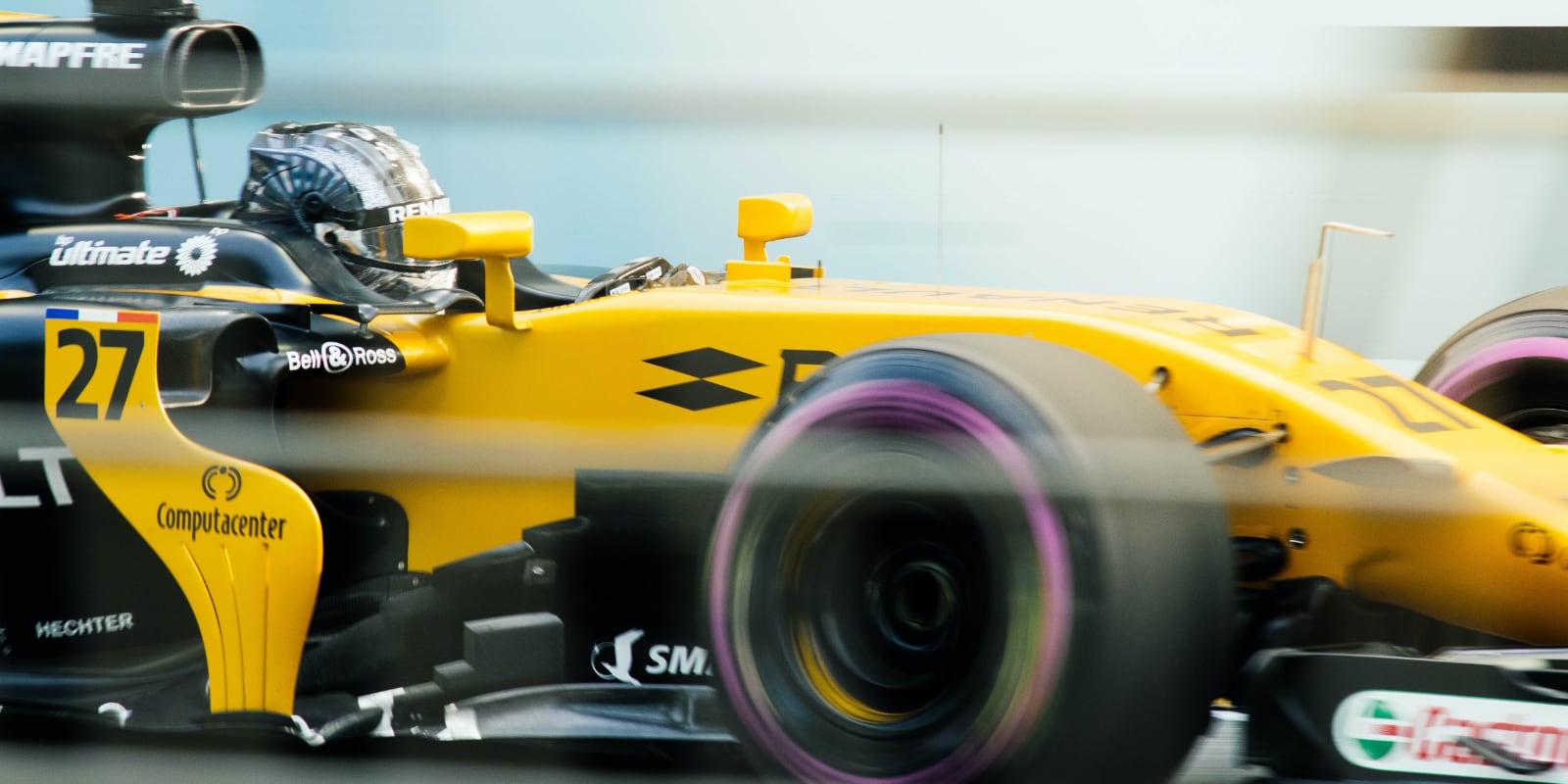Any sport has its specific terms that commentators like to throw around. Because of the sheer complexity of cars in general, the terminology around motorsport can be on the confusing side, and that's before you throw in all the various terms specific to Formula 1 racing.
You'll pick these terms up naturally over time, but it could take years to get a good grasp of them. That's why we're here to give you a head start. Know the terms here and you'll have a good grasp of the basics.
B
Backmarker: A term meaning a driver at the back of the pack. This term often comes up when race leaders start lapping drivers and the driver in front must let the faster car past.
Box: You'll frequently hear this term over the team radio. "Box, box" simply means it's time for the car to make a pit stop. This could be for a mid-race tire change, to repair a damaged part, or to retire the car from the race.
C
Clean Air: Clean air means the air in front of the car is free from aerodynamic disturbances, either because a driver is at the front of the pack or because they are far enough behind the next car.
Constructor: This simply means the team, like Mercedes or Ferrari. You'll hear this term most when commentators are talking about the Constructors Championship instead of the Drivers Championship.
D
Dirty Air: Air that inhibits the aerodynamics of a car. This reduces downforce, makes handling more difficult, and can increase tire wear.
Drive-Through Penalty: A penalty given to a driver where they need to drive through the pit lane, observing the speed limits, then rejoin the race.
DRS: Drag Reduction System. Enabled on certain sections of track, this lets drivers decrease drag and increase their chances of overtaking the car in front of them.
F
FIA: Fédération Internationale de l'Automobile. The sports federation that licenses and sanctions the Formula 1 World Championship.
Formation Lap: The lap that drivers take prior to lining up on the grid. Drivers will use this time to try to get their tires and brakes up to ideal operating temperatures.
G
Grid: This is where cars line up to start the race. Grid position means where a driver starts from.
K
KERS: Kinetic Energy Recovery System. This system harvests energy while a driver is braking and stores it for later use during acceleration.
M
Marbles: Bits of rubber from tires that shred off during the race. The more of these there are, the harder the service is to drive on.
Marshal: A race official whose main job is ensuring the safety of the race.
O
Overtaking: Passing another car to gain a position. This term isn't used when a leading driver laps cars at the rear.
P
Paddock: An area behind the pits where teams and drivers keep their motorhomes.
Parc Fermé: An area where drivers park cars after qualifying and races. While the cars are here, drivers and team members aren't allowed to touch the cars unless race stewards are watching.
Pit Wall: You'll see plenty of shots of the pit wall during a race. This is where team personnel spend the race, monitoring and communicating with drivers.
Podium: Where the top three drivers of a race are awarded. "On the podium" means finishing within the top three.
Pole position: First place on the starting grid.
Q
Qualifying: Qualifying (drivers often refer to it as "quali") determines where cars start the race, including who is on pole position.
S
Safety Car: A course vehicle that pulls on to the track that other drivers must follow. Usually called in the event of a stopped vehicle, accident, or other on-track danger.
Scrutineering: This is a check of the car by race officials to make sure everything is following the proper guidelines. Race results aren't official until this check is completed.
Steward: One of the highest ranking officials at a Grand Prix, helping make decisions about the race.
Stop-Go Penalty: This is like a drive-through penalty, but with an additional step: the driver must come to a full stop in their pit lane, wait 10 seconds, and then exit the pit lane.
T
Tow: When a car follow another car very closely for reduced wind resistance. Sometimes used among teammates during qualifying or at the start of races.
U
Undercut: When a car pits early to ensure they stay ahead of another driver after that driver pits. This doesn't always work, but can be very effective when it does.
V
Virtual Safety Car: Instead of a safety car making its way on to the track, a virtual safety car means drivers have to maintain track position (no overtaking) and remain under a given speed limit.
New to Formula 1?
People are getting into Formula 1 for the first time every year. If you're just starting to get into the sport, there's a lot to learn. Knowing the terminology helps, but it's not all you need to know.
We can help you there too. Our guide to getting started with Formula 1 will help figure out where to watch, how to familiarize yourself with the drivers, and help you find some classic races to get to know the history of the sport.
